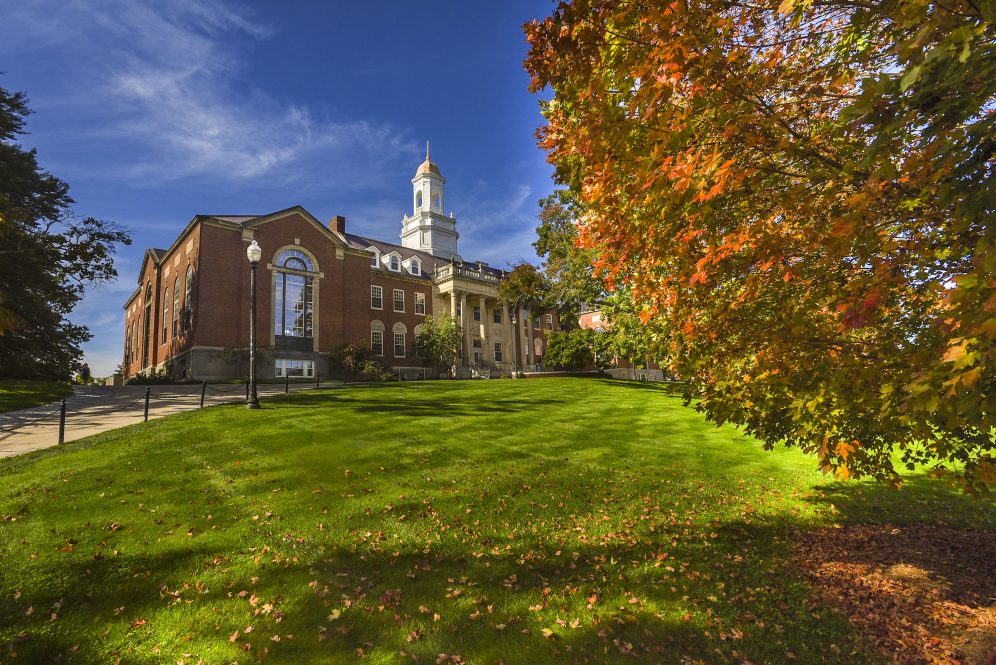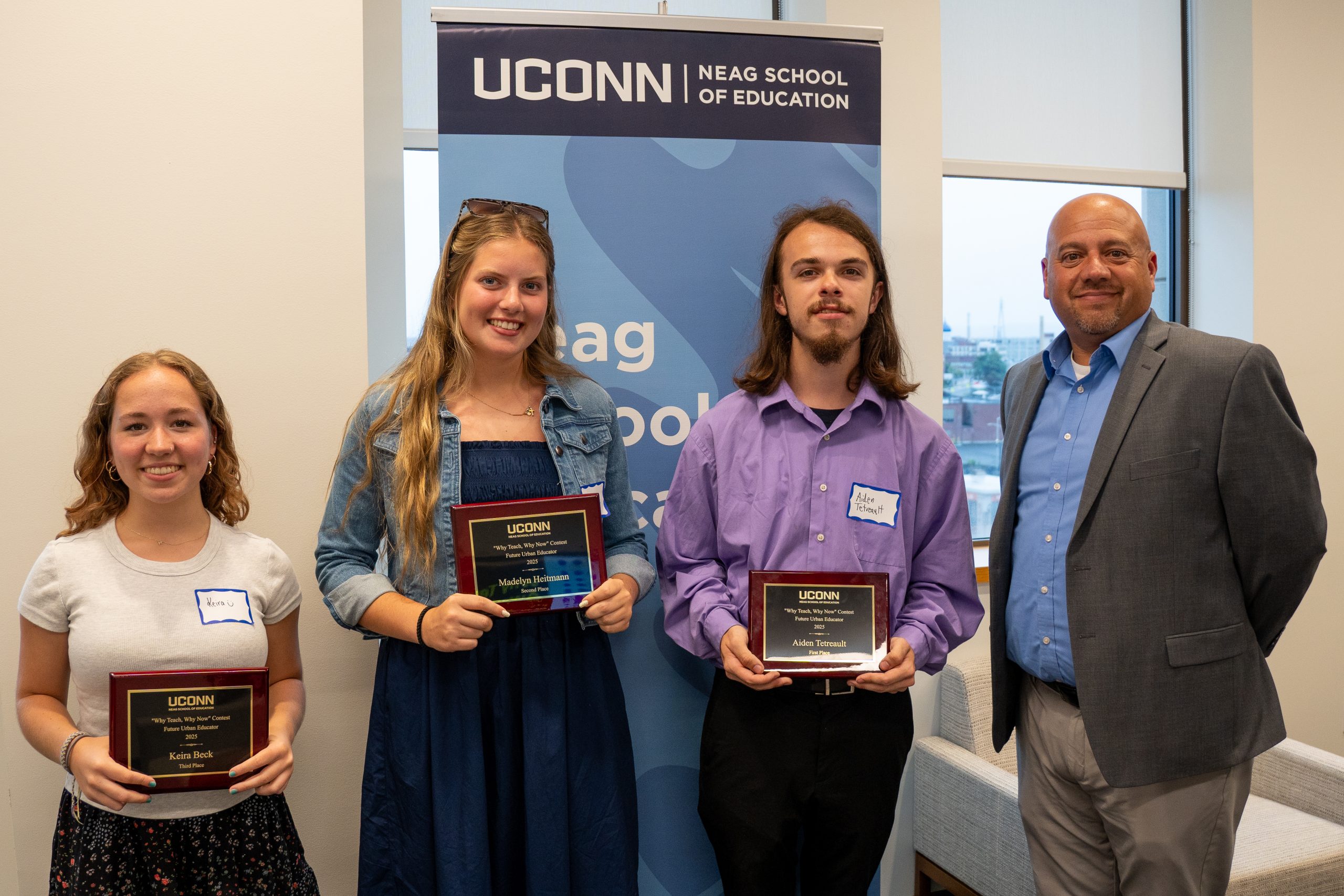Members of the Class of 2027 arrive at UConn with a track record of accomplishments, myriad aspirations for their college careers, and diverse backgrounds that will enrich their campuses and the University’s academic enterprise as a whole.
First-year students move in today and tomorrow in Storrs residence halls, followed over the weekend by returning and transfer students, and all Stamford residential students. Fall semester classes start Monday at all campuses.
Among UConn’s Class of 2027, about 30% of students are the first generation in their families to attend college, and 144 led their high school graduating classes as valedictorians or salutatorians. A record number of about 30% also come from backgrounds that are historically underrepresented in higher education.
Overall, they’re among an impressive class of more than 5,800 incoming first-year students at UConn’s campuses statewide, representing about 4,200 at Storrs and about 1,600 at the regional campuses in Avery Point, Hartford, Stamford, and Waterbury.
The University will also welcome about 668 students transferring to Storrs from other colleges and universities, plus about 230 transferring from other institutions to the regional campuses.
All of the enrollment figures are preliminary, with final numbers determined on the semester’s 10th day.
The new Huskies come to UConn having already secured a spot amid tight competition in this year’s record-high applicant pool of more than 48,800, including about 46,600 specifically seeking spots at the Storrs campus.
“Interest in UConn is at an all-time high, as we continue to see increases in applications from Connecticut residents and students from throughout the country and world,” says Vern Granger, UConn’s director of undergraduate admissions. “We are excited to welcome another diverse class of students and our expectation is from them to make significant contributions to the UConn community.”
Almost 30% of the incoming first-year Storrs students come from races or ethnicities that are traditionally underrepresented in higher education, a category that includes Black, Hispanic/Latino, Hawaiian/Pacific Islander, American Indian, and Alaska native students.
That’s a record high for UConn, as is the 47.5% of newcomers who are students of color, a category that includes the underrepresented students along with Asian populations.
Almost 32% of members of the Class of 2027 have personal or family incomes that qualify them for federal Pell Grant aid. That’s an increase from 22% in 2010, and an indicator that UConn is succeeding in its commitment to providing access to talented students regardless of their financial circumstances.
The highly talented incoming class also includes 618 first-year students whose achievements earned them a spot in the highly competitive Honors Program.
Overall, UConn will have about 24,000 undergraduates across all campuses, including about 19,000 at Storrs.
About 55% of the Storrs first-year students are Connecticut residents, and first-year students at Storrs and the regional campuses come from 156 of the state’s 169 towns and cities. They also originate from 43 states and 92 countries.
As travel complications eased after the COVID pandemic, UConn has continued to see a rebound in interest among out-of-state residents and international residents.
The overall UConn undergraduate student body will comprise about 75% from Connecticut, in the same range as throughout the recent past and as expected to continue moving forward.
The Class of 2027 is the third cohort accepted under the test-optional application process that UConn announced in spring 2020 and was extended for three more years to continue its assessment.
Under that pilot program, students can submit their SAT or ACT standardized test scores with their UConn applications if they wish, but are not penalized or disadvantaged if they choose not to.
UConn already uses a holistic application review process in which no single piece of an application, including standardized test scores, would be the make-or-break factor considered for an offer of enrollment.
As was the case with the previous class, a large number of those in the Class of 2027 – about 68% – opted not to submit standardized test scores with their applications.
UConn had already been considering whether to pilot a test-optional process before COVID-19 emerged in 2020. However, the pandemic added impetus by exacerbating the underlying equity issues, since high school students had varying access to e-learning, preparation for the SAT and ACT, and conducive testing environments.
The three-year extension will help the University disentangle the effects of the COVID pandemic from the test-optional approach when assessing student success. That includes following the progress of members of the UConn classes whose academic paths were markedly impacted by the pandemic’s complications, including this year’s incoming first-year students, who were in their first year of high school when COVID-19 emerged in spring 2020.



